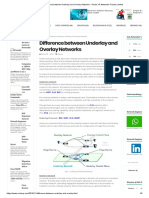0% found this document useful (0 votes)
230 views13 pagesAWS Cloud Practitioner Essentials
The document discusses cloud computing concepts including traditional datacenter challenges, benefits of cloud computing like elasticity and reliability, and types of cloud including IaaS, PaaS, and SaaS. It also covers AWS global infrastructure including regions, availability zones, and edge locations. It summarizes AWS tools for organizing costs like Cost Explorer, TCO calculator, and resource tags. Finally, it discusses AWS support plans and services like EC2, Lambda, and content delivery.
Uploaded by
Christopher RootCopyright
© © All Rights Reserved
We take content rights seriously. If you suspect this is your content, claim it here.
Available Formats
Download as TXT, PDF, TXT or read online on Scribd
0% found this document useful (0 votes)
230 views13 pagesAWS Cloud Practitioner Essentials
The document discusses cloud computing concepts including traditional datacenter challenges, benefits of cloud computing like elasticity and reliability, and types of cloud including IaaS, PaaS, and SaaS. It also covers AWS global infrastructure including regions, availability zones, and edge locations. It summarizes AWS tools for organizing costs like Cost Explorer, TCO calculator, and resource tags. Finally, it discusses AWS support plans and services like EC2, Lambda, and content delivery.
Uploaded by
Christopher RootCopyright
© © All Rights Reserved
We take content rights seriously. If you suspect this is your content, claim it here.
Available Formats
Download as TXT, PDF, TXT or read online on Scribd
/ 13























































































